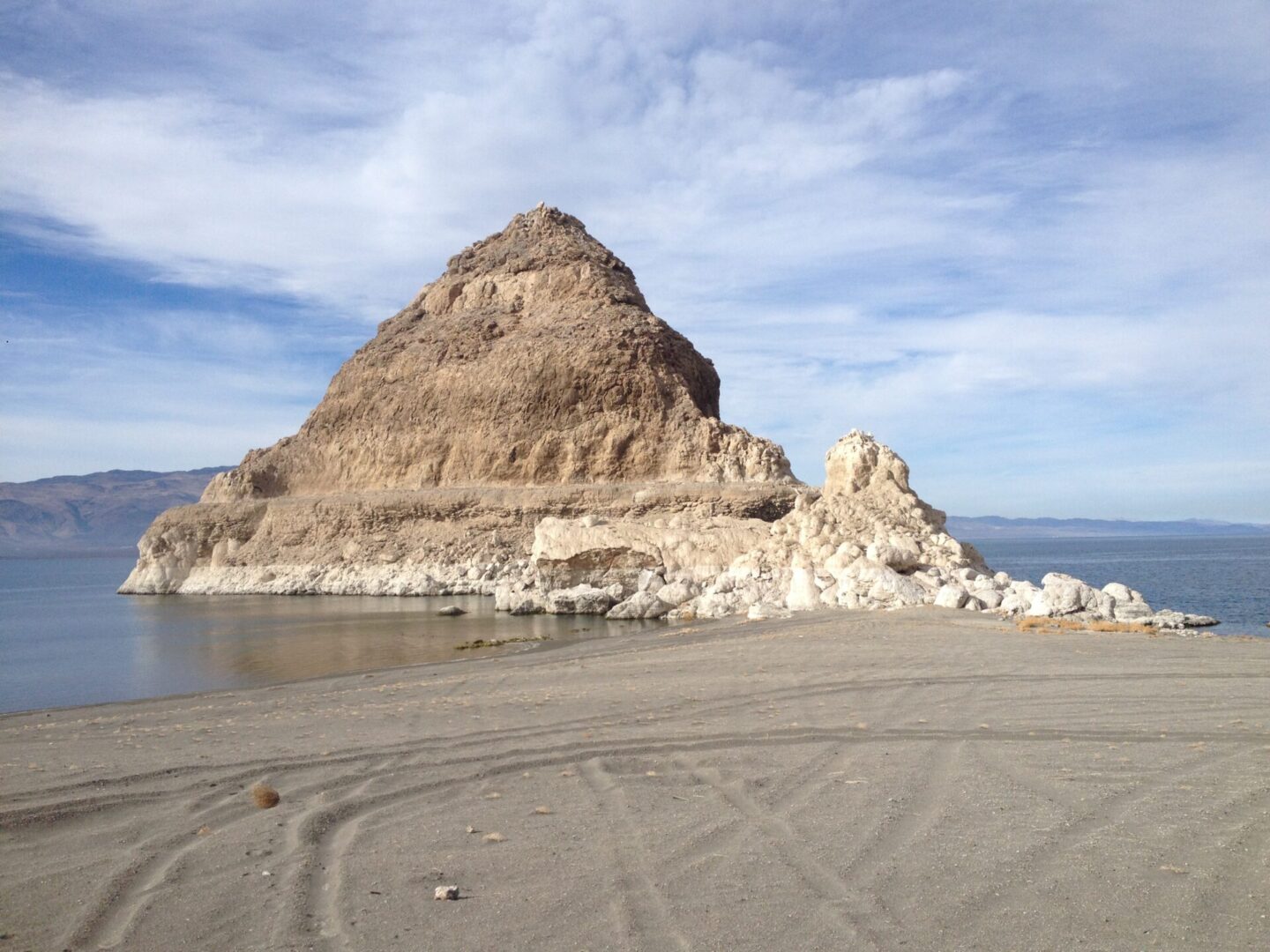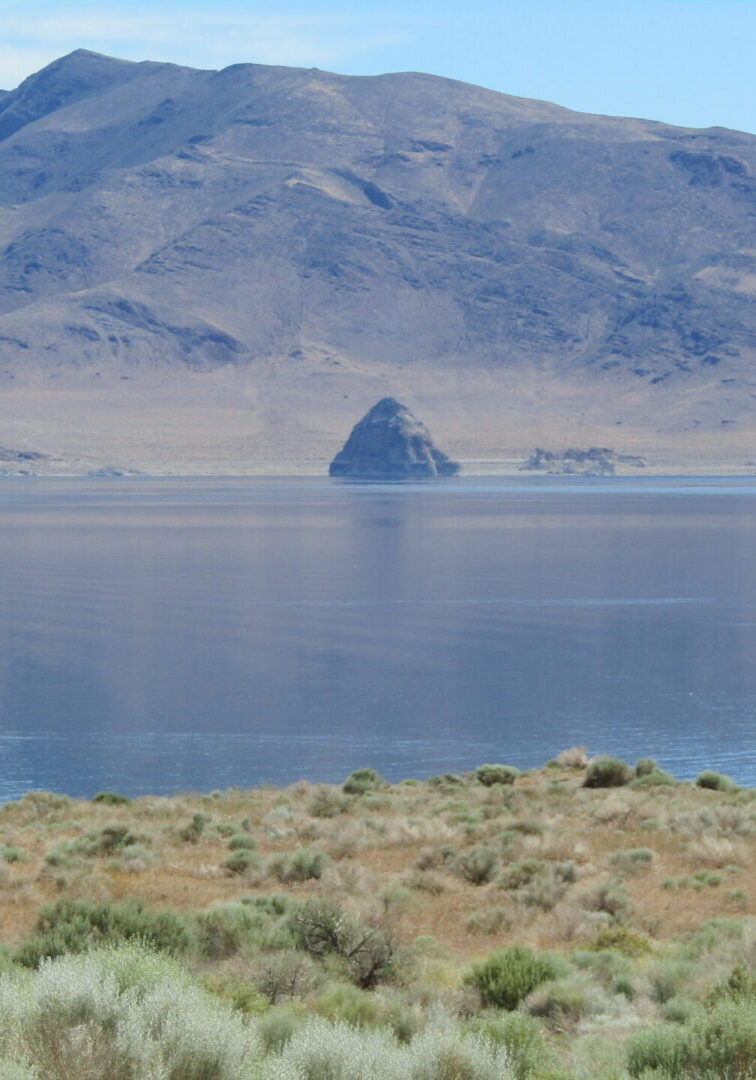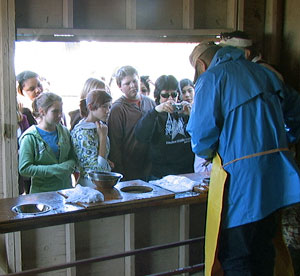
About Pyramid Lake Fisheries
Desert Lake
Pyramid Lake is located 35 miles northeast of Reno and is situated entirely within the exterior boundaries of the Pyramid Lake Paiute Indian Reservation. Pyramid Lake is a terminal lake with an elevation of 3,800 feet above mean sea level. The lake receives almost all of its water from the Truckee River, which has its headwater at Lake Tahoe in the Sierra Nevadas. Pyramid Lake is a saline lake and it is about 1/6 salinity as ocean water. The lake is flanked to the east and to the west by rugged mountain ranges. Around the lake shore and in and out of the water are many large “tufa" rock formations (formed by calcium carbonate deposits). Many visitors to Pyramid Lake come here just to enjoy the striking scenery. Boating, water skiing, jet skiing, fishing, camping, and observing wildlife are popular activities during the summer months!
A Fragile Ecosystem
In the time before humans, the endemic Cui-ui and the large Lahontan Cutthroat Trout evolved from the ancient inland sea which became known as Lake Lahontan. The Numu (People), evolved with the surrounding environment learning survival instincts from all living beings. The Numu identified themselves from the food from which we are derived; hence Kooyooe Ticutta (or Cui-ui eaters). The western settlement brought new demands and exploitation on local natural resources, and from the diversion of Truckee River water caused Pyramid Lake levels to drop by 80 feet in elevation, causing the near destruction of its fishery. The rise of the delta at the mouth of the Truckee River constrained fish access into the lower Truckee River to spawn naturally. Hatchery programs beginning in 1949 through 1982, stocked Lahontan Cutthroat Trout back to Pyramid Lake. However, up until 1971 the Cui-ui had to fare for themselves. Both fish are listed under the Endangered Species Act in 1966 as endangered. The Lahontan Cutthroat Trout were down listed to threatened in 1973. Management of the spring Cui-ui runs is researching the year classes of Cui-ui in effort to establish strong survivability. The Tui chub is the most abundant fish in Pyramid Lake, and it is the primary food source of the Lahontan Cutthroat Trout. It is critically important to understand the delicate food web of Pyramid Lake ensuring that the balance can be sustained. From the water quality to the microscopic life to the fish that derive their survival in Pyramid Lake on the aquatic food web, the effort to maintain a healthy lake system is an important goal.




The Hatchery Role with Our Fishery
Western interference on the Truckee River waterway and on the Pyramid Lake and the lower Truckee River aquatic ecosystems has impacted the natural balance of its lifeway. Assuring the restoration of the natural habitats can ensure that populations of the Cui-ui and Lahontan Cutthroat Trout are maintained at desirable levels. Since 1974 when the Pyramid Lake Paiute Tribe started its role of fishery management responsibilities, the Tribe constructed 3 trout rearing facilities on the reservation and two facilities to hatch and rear Cui-ui. The Lahontan National Fish Hatchery in Gardnerville annually provide some of the stocking of Lahontan Cutthroat Trout for release in Pyramid Lake. The U.S. Fish and Wildlife Service also operates the Marble Bluff Fish Facility approximately three miles from the mouth of the Truckee River to allow the passage of Cui-ui during years of low water inflow. The Marble Bluff Dam was constructed on the lower river to prevent head-cutting of the lower Truckee River channel. This 35-foot high dam contains a fish lock that lifts spawning Cui-ui and Lahontan Cutthroat Trout above the dam for assessing to the lower Truckee River. The role of Pyramid Lake Fisheries is to coordinate fish production of their hatcheries with the contribution of the U.S. Fish & Wildlife Service work to maintain and enhance the fish populations of Pyramid Lake.
Also, see Hatcheries for more information.
Book a Tour
Pyramid Lake Fisheries tours is a great opportunity to educate the public with the spawning and rearing of Pyramid Lake fish and the importance of being stewards of our fish. Any organization is welcome to observe and participate during the spawning season, which can run from March through May of each year. Classes from kindergarten through high school and adults enjoy the drama of spawning Pyramid Lake fish. To schedule a tour, call the administration office at 775.476.0500.

Local students observe hatchery personnel spawning cutthroat trout at the Lake Operations spawning channel.
